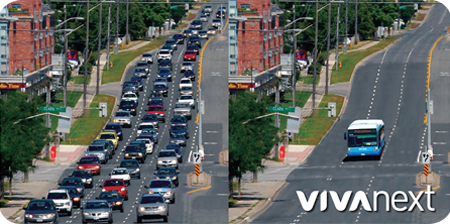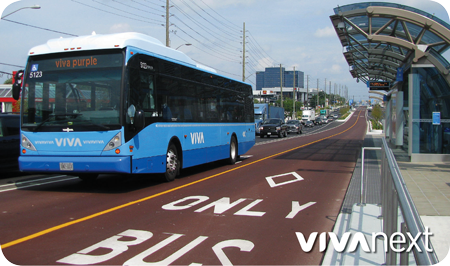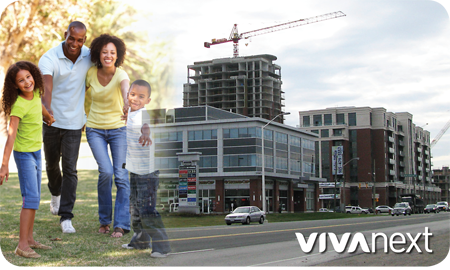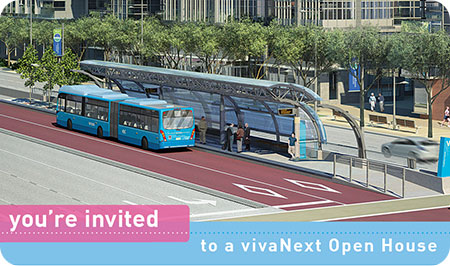The transformation along the Vaughan Metropolitan Centre [VMC] corridor has begun. And 2013 was a busy year with vivaNext rapidway construction underway along Highway 7 West. Crews worked to remove signs, test soil and begin utility relocation to prepare for construction. Check out this video to see all the hard work that took place.
Although colder temperatures are here to stay, it doesn’t mean our work is done for the season. Throughout the winter, hydro, gas and telecommunications installations and relocations will continue, and we’ll also be busy with CN Bridge work on Highway 7.
Preliminary construction activity will also continue this winter in the second phase of vivaNext rapidway construction along Highway 7 West. This phase includes approximately 12 kilometres of rapidways on Highway 7 West from Helen Street to Edgeley Boulevard, and from east of Bowes Road to Yonge Street, including parts of Bathurst Street and Centre Street. During the winter months, you can expect to see contractors and surveyors walking along the corridor, reviewing designs, taking photos and gathering data.
The Toronto-York Spadina Subway Extension [TYSSE] project also celebrated a major milestone at the end of last year. In November, tunnel boring machines [TBMs] “Yorkie” and “Torkie” finished their tunneling journey north to VMC station. Together, these TBMs tunnelled over 6.4 km of twin tunnels for this project. Way to go! Take an inside look at TBM tunnelling for the project, including new footage of the inside operation of the TBMs and four separate TBM breakthroughs for the tunnelling in York Region.
When complete, this subway line will include six stops, 8.6 kilometres of track. Residents and visitors alike will enjoy the mixed-use, transit-oriented development offered in the VMC area, including convenient passenger pick-up and drop-off, a York Region Transit bus terminal, and connection to the viva rapidway running in dedicated lanes east and west along Highway 7. It will be a great place to work, shop or relax, and getting there will be easy whether you walk or ride transit.
Stay in touch with us over the winter! Coping with construction is a lot easier when you know what to expect, where, and for how long. For an in-depth look at different elements of vivaNext projects, plans, designs and ongoing activities, visit vivanext.com and subscribe to receive construction notices for work happening in your area.










